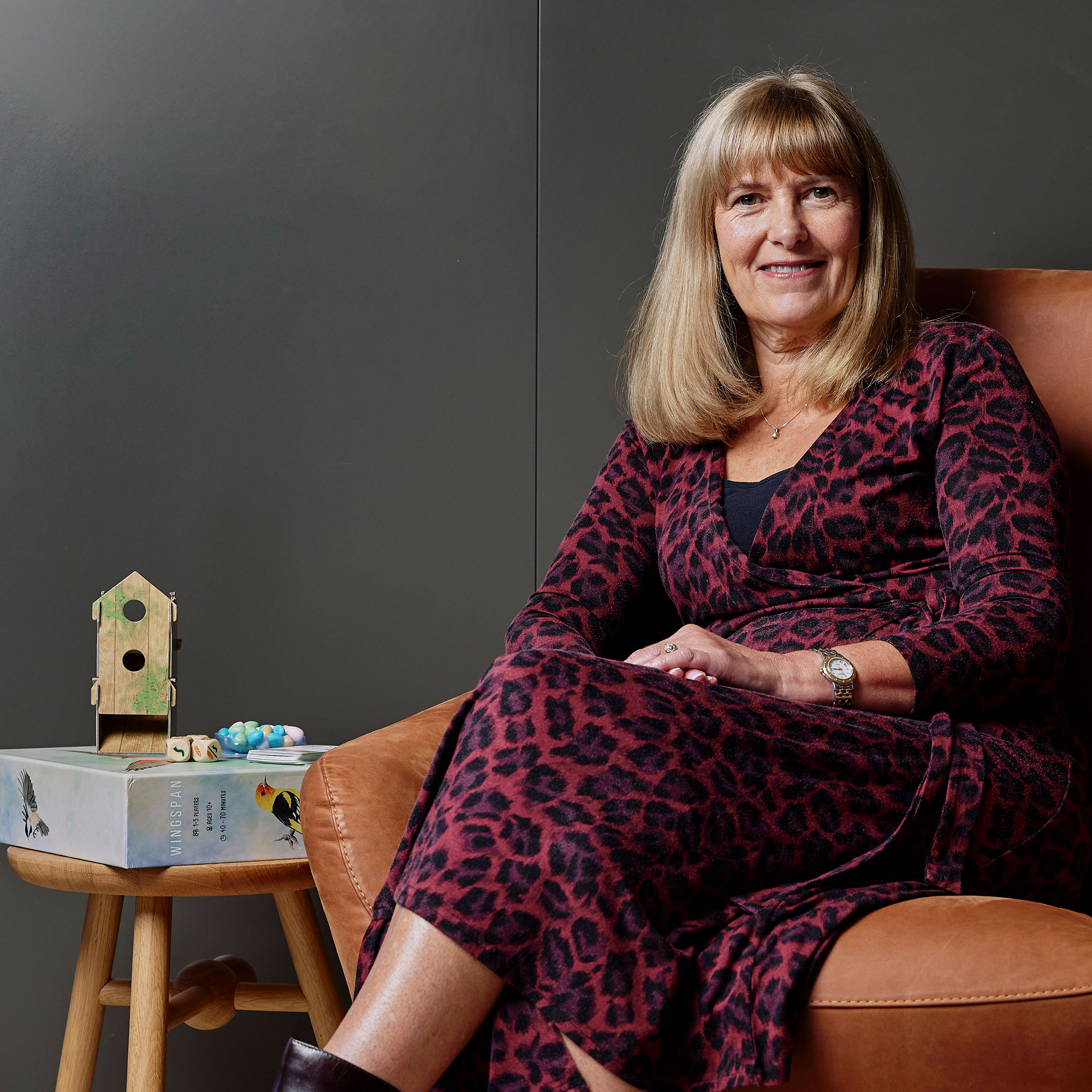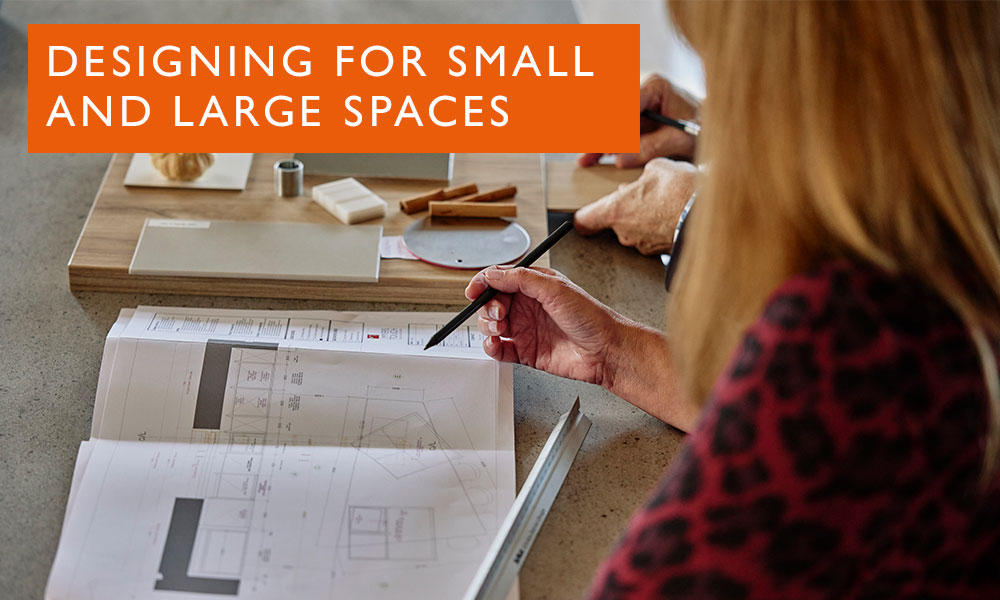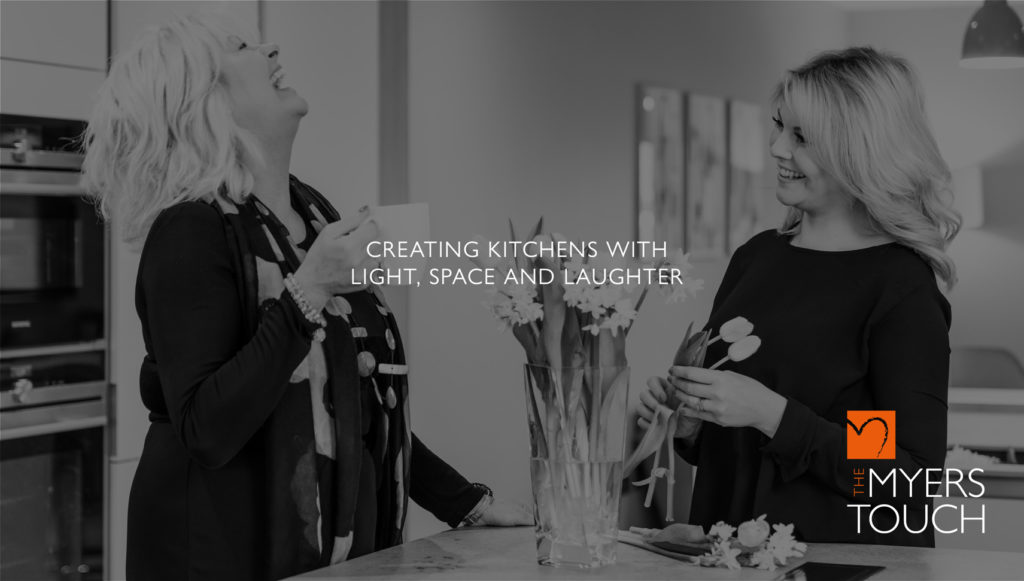Designing for Small & Large Spaces

In this exclusive Tuesday Design Talks session, our esteemed Interiors & Colour Specialist, Helena, will explore the intricacies of handling both small and large spaces in kitchen design.

Design Tips: A Virtual Design Talk
Inspiring talks and practical advice

Good evening, everyone. Welcome to tonight’s design talk. Whether you’ve been following the series or just joined us, it’s great to have you here. You’ll notice a slight difference tonight as I’m presenting from home due to a track and trace memo requiring me to isolate for the next 10 days. So, please excuse any background noise from my husband.
Tonight, we’ll discuss the challenges of dealing with large and small kitchens. Both have unique challenges, and I hope to provide you with ideas and pointers to help you approach your space effectively.
Since I’m working from a computer and can’t see your faces or comments, I’ll run through the presentation, starting with small kitchens and ending with larger ones. We’ll finish by about 8:10 PM, leaving 20 minutes for your feedback and questions. Please type your questions into the chat bar as we go along.
Challenges of Small Kitchens
In my 16 years of dealing with clients, the most common issues in small kitchens are:
- Storage: Not enough storage space.
- Worktop Space: Limited space for preparing food.
- Appliance Space: Need for space to house appliances.
- Clutter: Managing clutter due to limited space.
Here are my top tips for maximising space in small kitchens:
Use Clever Storage Systems:
- Drawers are more efficient than cupboards. They allow you to see everything at a glance and rotate your food items easily.
- Consider internal drawers within cupboards for better access and organisation.
- Adjustable shelves can help maximise space for larger items.
Use Rail Systems to Keep Worktops Clear:
- Utilise the space between the worktop and wall units for hanging utensils and other items.
- Consider magnetic or rail systems on blank walls for additional storage.
Innovative Technology:
- Boiling water taps can replace kettles, freeing up worktop space.
- Downdraft extractors can be a great alternative to ceiling extractors, especially for islands.
Wall cabinets can house spices or crockery, freeing up space for cooking. Ventilation options include recirculating or venting out to meet your home’s needs.
A steam combination oven is a great appliance, offering extra cooking facilities. With a steam oven, you might find you need a smaller hob, freeing up precious worktop space. This is ideal for small kitchens where worktop space is at a premium.
Using mirrors in a kitchen can create a sense of space and light. Positioning a mirror at mid-height, rather than as a full splashback, can brighten the kitchen and provide connectivity with the rest of the room.
Maximising walls without windows is crucial in small kitchens. For example, a project I worked on had a compact kitchen with a full-height wall, a full-height window, a doorway, and three windows. We maximised the back wall with a fridge freezer, full-height storage, cabinets, and ovens, leaving the worktop clear for preparation.
In kitchens with high ceilings, use the height creatively. For instance, a client had storage baskets in three holes rather than filling the space with a single block, adding an individualistic style.
Units that reach the ceiling can provide extra storage. Glass in the top units adds a touch of mystery and intrigue.
A drop-down table in a small kitchen can serve multiple purposes, providing a place to sit while cooking or having breakfast.
Multi-Purpose Solutions
- Ventilating Hob: A hob with built-in ventilation can free up a wall unit.
- Mobile Drainer: A mobile drainer can be laid out on the worktop and folded away when not in use, freeing up space.
- Multi-Purpose Oven: An oven with pulse steam and microwave functions can save space by combining multiple appliances into one.
- Mobile Bins: Clip-on bins can save floor and cabinet space, though they require more frequent emptying.
Prioritise Your Needs
In a small kitchen, prioritise what’s important to you. For example, having a countertop to connect with people might be more important than fitting a washing machine in the kitchen. Make a list of dreams and priorities to help decide what is essential.
Peninsula vs. Island
In small kitchens, a peninsula can be more effective than an island. It provides extra space and can be a clever solution for awkward spaces. For example, placing the hob on the peninsula towards the end near a window can create a functional and aesthetically pleasing barrier.
The Ultimate in Compact Style
This is the ultimate in compact style. It’s simply a bureau with a sink and a hob. It prioritises space, so there’s no dishwasher, but it’s a stunning beauty for a small kitchen.
Large Kitchens
For large kitchens, the focus is on flow and connectivity. How does the kitchen connect with the rest of the home and the people in it? How can you zone the space to avoid feeling isolated? And how can you achieve the wow factor?
Key Considerations for Large Kitchens
- Room Dynamics: Understand the proportions, grounding, atmosphere, and presence of the room. Engage with what the room is saying—whether it’s dramatic, light and airy, or moody.
- Connectivity: Ensure the kitchen connects well with other areas of the home. Sometimes, this might mean changing the kitchen’s position within the house.
- Uninterrupted Flow for the Chef: In large kitchens, it’s crucial to maintain an uninterrupted flow for the chef, avoiding any obstructions.
- Let the Room Breathe: Large kitchens should have areas of open space to reveal their capacity and let the room breathe.
- Creating Zones: Distinct zones are vital, especially as kitchens are now multifunctional spaces. Use colour, tone, texture, and contrast to make these zones stand out.
Examples of Large Kitchens
- Room Dynamics: A kitchen with one window, a built-out wall for the oven and fridge freezer, and a symmetrical layout. The use of glass, texture, and open space creates a rich and classical look.
- Distinct Zones: A kitchen with a table and chairs, a sofa area, and a cook zone guarded by an island. The storage is elegant enough for the living room yet practical for the kitchen.
- Light and Airy: A kitchen with plenty of shelf space, a large rug in the centre, and a guarded cook zone with a wonderful view. Connectivity with the landscape and the home is key.
- Guarding the Chef’s Space: A kitchen with high ceilings and framed cabinets, creating a beautiful symmetry. The structure of the kitchen connects well with the structure of the home.
- Empty Space: An urban loft-style kitchen with open shelving and freestanding units. The dual-level worktops allow for multi-users, creating a cohesive feel.
- Multi-Focus Areas: A kitchen with multiple focal points, such as an island and stunning storage. Clever corners and open cabinetry create a welcoming and hospitable feel.
Prioritising in Small Kitchens
In small kitchens, prioritise what’s important to you. For example, having a countertop to connect with people might be more important than fitting a washing machine in the kitchen. Make a list of dreams and priorities to help decide what is essential.
Peninsula vs. Island
In small kitchens, a peninsula can be more effective than an island. It provides extra space and can be a clever solution for awkward spaces. For example, placing the hob on the peninsula towards the end near a window can create a functional and aesthetically pleasing barrier.
See more videos of our past talks on our Facebook page. Find out about the latest trends we are seeing in high end kitchen design and book an appointment to visit our kitchen showroom.
